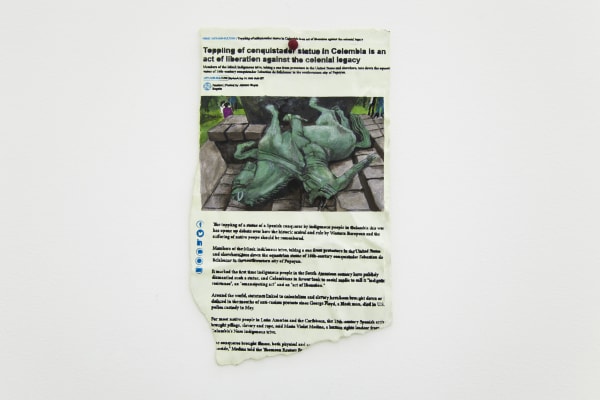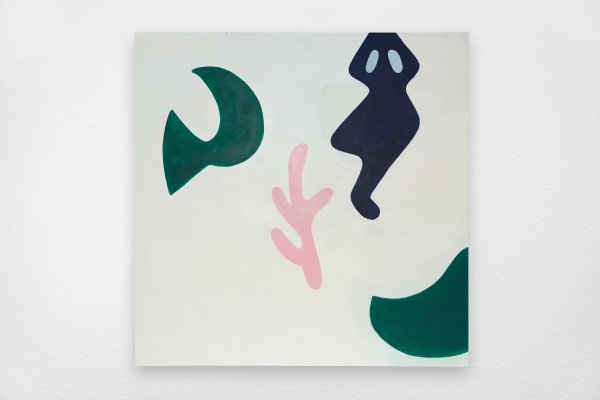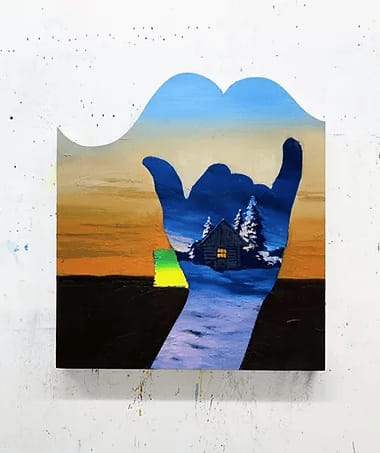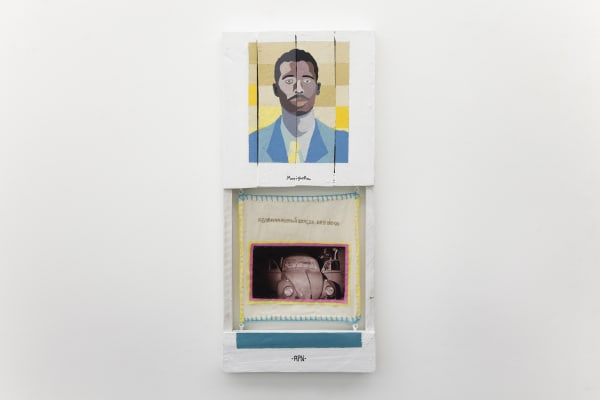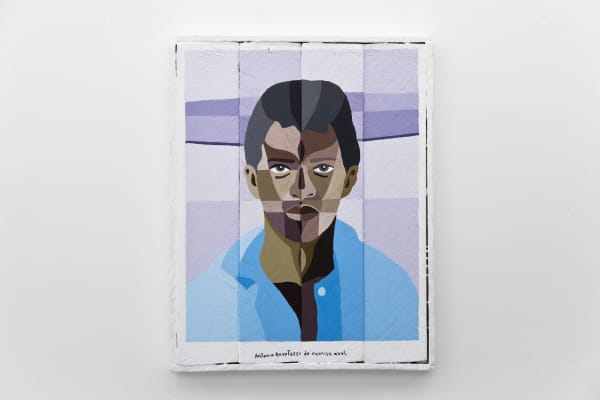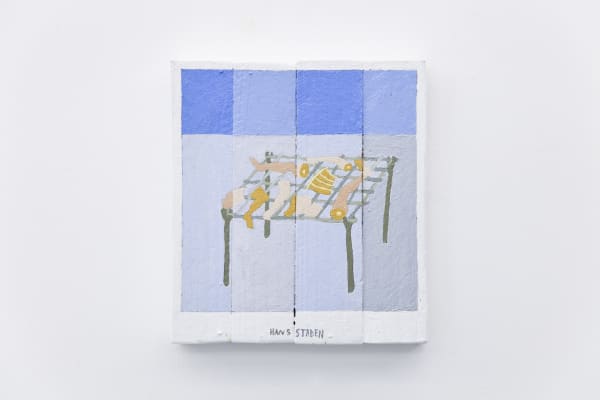Ten Years Later: Group show
Ten years later celebrates a decade of Galeria Athena's activities in Rio de Janeiro. To celebrate this moment, a selection of works by the thirteen artists currently represented was gathered in this exhibition, combining previously unpublished works, others that have already participated in exhibitions at the gallery or even in important exhibitions in Brazil and abroad. In general, the exhibited set evokes relevant themes such as memory, time, social and political transformation, city construction and relations between the material and the immaterial.
Over these ten years, there were 47 exhibitions between individual and collective. Ten years later recalls, through the works of Débora Bolsoni, Laís Myrrha, Laura Belém, Vanderlei Lopes, Frederico Filippi and Rodrigo Bivar, some of these exhibitions. Tampo com Lenço (2015), by Débora Bolsoni, was in the exhibition Urbanismo Geral - the artist's first solo show at the Gallery in 2015. The artist is known for her works with three-dimensional shapes that relate to the architecture of spaces and urbanism in cities. Here it is a manhole cover, with a fabric that partially covers it, in an allusion to a figure such as the badges used to represent societies or institutions. In this kind of coat of arms there is no writing or element, but there is a fragment of the city, displaced from its original function, as a way of bringing a sign of urbanity to the gallery space.
Two years later, Lais Myrrha presented the work Discontinuidade pelo Tempo (2017), in her individual entitled Cálculo das Diferenças. The work is made up of four plates - one of black granite, one of white marble, one of cement and the other of earth - which are placed side by side and over them a frieze creates a grooved line. Over time, the line is no longer continuous, as each of the materials resists time in a different way. The work is only completed over time and the line will be discontinued.
Histórias Curtas (2016) also named the artist Laura Belém's first exhibition at the Galeria in 2016. The work consists of a series of soapstone objects, combined by groups. They are utilitarian pieces that had been discarded by artisans, for being broken, unfinished, or for having some manufacturing defect. When collecting and selecting the pieces, the artist covers and fixes a talcum powder from the soapstone, in order to emphasize the action of time. According to Laura, the discarded pieces interested her as, not fulfilling their functional role, they began to reveal a unique sculptural potential.
Concorrentes (2020), despite being a new and unpublished work at the Gallery, results from a research that the artist Vanderlei Lopes has been carrying out over the years. In Everything that glitters is gold, the artist's solo exhibition at Athena in 2014, Vanderlei presented works in polished bronze, with a similar concept to what we presented in the commemorative exhibition. In this sculpture, water drains and invades crevices, knocking down what is in front of it. The liquid state of bronze, when incandescent, points to the process of liquefaction, undoing to build the shape itself. A kind of interval is created in which the temporalities of the spectator and the works overlap, highlighting the notion of duration.
Recalling a more recent exhibition at the Gallery, we present Gramática (2019), by Frederico Filippi. The work was exhibited in his solo show, also in 2019, called Cobra Criada. The work, made of wood sheets with charcoal and asphalt paint, receives drawings in its various chips. “In these works I use primary materials. Coal is the transformation of wood and asphalt paint the subsoil, where metal comes from”, says the artist. “It is as if each fragment of native wood leaves were a fragment of memory, a living witness. Or, as the saying goes, 'the forest has more eyes than leaves'”, he points out.
While Lais, Laura, Débora, Vanderlei and Frederico recall previous exhibitions at the Gallery, with Bivar's work we revisit the virtual space. More recently, the first online exhibition was presented on the gallery's website entitled Gema, by Rodrigo Bivar. Among the works chosen, Peixe e Planta (2019) explores, in an empirical way, the relationship between color and drawing. Without thinking about a project or previous idea for his work, the artist establishes a combinatorial game between application, overlapping and covering up of color. The interest in abstraction related to the structures and invoices of color allow the artist to experiment with painting itself.
Other works that had not yet been exhibited at the Gallery, but are known by the public for their prominence in important national and international institutions and exhibitions are: A Fortaleza (2010) by Yuri Firmeza, the video Untitled [beans] (1975) by Sonia Andrade and Cadeira Cativa (2019) by Matheus Rocha Pitta.
Fortaleza participated in the 31st Bienal de São Paulo, in 2014, and consists of two photographs. Firmness reenacts childhood photography in which he takes the classic weightlifter pose. Between one image and another – an interval of almost two decades – in addition to the artist's growth and development, the radical change in the background landscape is noteworthy. In a photo we see houses, few buildings and a horizon; on the other, taller buildings that fill the formerly empty spaces.
Recognized for her pioneering role in video art in Brazil, Sonia Andrade gained international renown for her pioneering productions in a dictatorial moment in the country in the 1970s. In Ten years later, we present the video Untitled [beans] (1975), which is curious about having been filmed on gallery street. In the video, the artist is sitting at the table while eating beans and drinking guarana. In the background a window and a television, which shows an American series and its commercial breaks. As an element of surprise, at the end of the video, Andrade throws beans at the camera, as if separating what is outside from what is inside, what is real and what is fiction.
Cadeira Cativa (2019), by Matheus Rocha Pitta, is exhibited for the first time in Rio de Janeiro, after being presented at the art space Auroras, in São Paulo in 2019. Continuing with his recent research, the artist presents the installation that it uses chains, a chair, selfie sticks, images and concrete. The crossing of these contemporary arm extenders supports the chair, suspended in the middle of the chains. The visual reference refers to the dictatorial period, now crossed by a rigid digitalization where the “finger pointing” is based on this game of individualities.
Among the well-known and iconic works, we also present a set of unpublished works by artists André Griffo, Desali, Rafael Alonso and Raquel Versieux. Instructions for the administration of farms IV (2021), by André Griffo, continues his research of relating the spaces he appropriated with historical and contemporary references. Colonial architecture, landlords, workers are represented in narratives that, in addition to exposing the social structure of Brazil in the past, serve to compare with the inequalities in the present and testify to the immutability of things.
Also highlighting the present time, Desali explores her surroundings and urban experience in different ways. Friends and close neighbors of the artist are recurrently represented in paintings, videos and photography, as well as the landscape, permanent and changing constructions. For the exhibition Ten years later, the artist produced a set of portraits of relevant personalities that should not be forgotten, but rather exalted: Marielle Franco, Marighella and her family, Antonio Benetazzo. The works are the result of a research by the artist who has accompanied him since his artistic residency at SILO, in 2019, and which expanded into the recent exhibition Enciclopédia Negra, at the Pinacoteca do Estado de São Paulo (São Paulo, Brazil).
Rafael Alonso brings to the exhibition two new paintings, but they are an offshoot of a recent research by the artist that was also presented in Olho Grande, a solo exhibition by the artist at Galeria Athena, in 2020. Alonso makes use of symbols and icons commonly associated with the style of life of the carioca: the surfer and the gesture of hang loose against an idealized landscape, without losing the critical tone of an ideal nature.
Finally, Raquel Versieux brings Escritos do Tempo (2021), a series based on research with cotton and the conceptual relationship that the artist establishes between this material and the dynamics of its cultivation in the Caldeirão da Santa Cruz do Deserto movement, sovereign agricultural community, with a religious base, led by Blessed José Lourenço, between 1926 and 1936, when it was persecuted and violently attacked by the police, in Crato, Ceará. For the artist, embroidery is like a language and forms a writing that, with incomplete letters, deals with gaps in this story.
With a plural set Ten years later celebrates the trajectory of Galeria Athena, but also affirms the partnership and the certainty of the multiple paths to be taken. The exhibition looks to the past with pride, but it is above all an invitation to what is to come.









